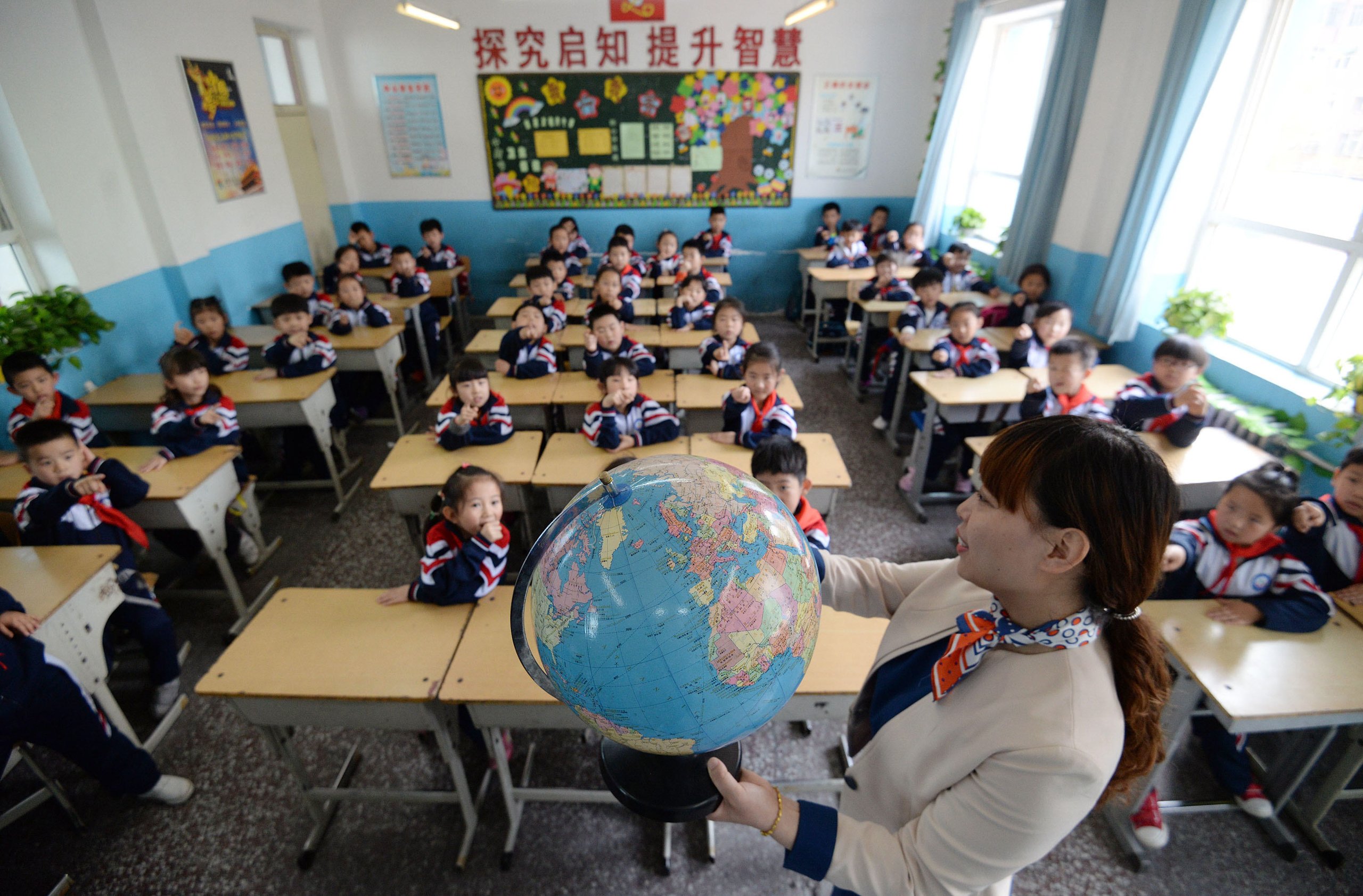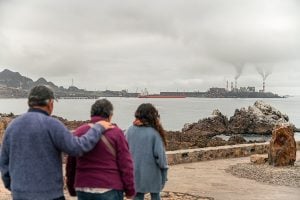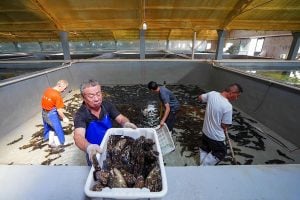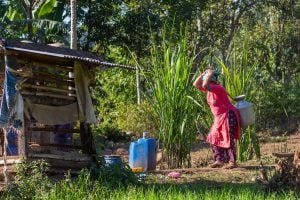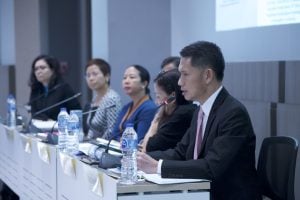Despite climate change being an unavoidable global challenge, nearly half of countries do not include it in their educational offerings, according to a 2021 Unesco survey.
In China, climate change has been incorporated into the syllabus in recent years. It has come to be seen as an important step for building social consensus around China’s climate targets. This view gained momentum in 2020, when the country declared its “dual-carbon” goals of peaking emissions before 2030 and reaching carbon neutrality before 2060.
Climate-related knowledge now appears in the textbooks and classes of many subjects at primary and secondary levels. Teachers are finding ways to inform their students, such as by observing the changing behaviour of flowering plants in response to climate fluctuations. Meanwhile, universities and vocational colleges have set up new courses, disciplines and research centres in response to demand.
However, Dialogue Earth has found that efforts to deliver effective climate education in China are faltering, due to a lack of materials, knowledge and time among teachers.
Integration
Despite the state’s efforts to boost climate change education in China – and broad public support for an active government response to it – knowledge of the science behind the subject remains low.
In 2021, the State Council issued a carbon-peaking action plan. This included incorporating “ecological civilisation” (the government’s widely deployed sustainability vision) into the national education system, and disseminating “basic knowledge about carbon peaking and carbon neutrality”.
The following year, the Ministry of Education released a paper calling for the integration of “green and low-carbon requirements into curriculum and teaching materials at every stage of national education.” The paper specifies how to introduce the topic of low-carbon development at each level, from pre-school up.
Government-issued “curriculum standards” govern China’s compulsory education, which covers the nine years of primary and junior-secondary school (usually from 6-15 years old). These standards specify the teaching requirements and form the basis for teaching materials, curricula and exams. Publishers then produce teaching materials according to the standards, and local educational authorities and schools pick what they wish to use.
Climate change concepts have existed in China’s education system since before the dual-carbon goals became a policy focus, but not always under the banner of “climate change”. Phrases such as “green and low-carbon”, “green/sustainable development” and “renewable energy” have gradually established themselves. Climate-related knowledge also comes under the broader headings of “ecology” and “the environment”.
The phrase “climate change” does not appear in the Ministry of Education’s curriculum standards, which form the guidelines for all primary- and junior secondary-level textbooks and curricula. The latest edition (2022) of the standards reflects this: no chapter under any subject specifically addresses climate change. However, climate-related content can be found in biology, science, chemistry, geography and physics.
Even the curriculum standards for “ethics and the rule of law” require pupils in grades five and six (usually 11-12 years old) to “gain a preliminary understanding of the concept of sustainable development.” Those in grades seven to nine (12-15 years old) should then “learn that ‘carbon peaking’ and ‘carbon neutrality’ are important leverage and markers for promoting high-quality development and advancing ecological progress”.
Unlike many other academic topics, climate change education often involves interdisciplinary activities, too.
Dialogue Earth consulted a Shanghai secondary school student: “We talked about climate change in chemistry while learning about CO2. It also came up in reading comprehension tests for language classes. Apparently, geography goes into it in more depth at senior high.”
The curriculum standards for physics, chemistry and biology all cover climate change-related content. In geography, the topic of “resources, environment and national security” requires pupils to “analyse the environmental effects of carbon emissions, based on the theories of the carbon cycle and the greenhouse effect.” They must also explain “the importance of international cooperation for emissions reduction.”
The most recent revision of the general curriculum standards for senior high was updated before 2020 and hence does not consider the dual-carbon pledge. However, a textbook editor (who wished to remain anonymous) told Dialogue Earth: “The standards contain more about climate change than they used to. So ‘dual carbon’ could well be added at the next revision.”
China’s dual-carbon goals are taught more directly within higher education. In 2022, the Ministry of Education called for top talent to be trained in carbon peaking and neutrality and vowed support for some institutions to establish “new faculties, courses and vocational offerings” in those areas.
As of that year, there were 21 undergraduate programmes running in China that were directly related to the dual-carbon pledge. They include science and engineering courses on new energy, smart grids, carbon storage, hydrogen energy and big data for resources and the environment. Dozens of universities now have interdisciplinary carbon-neutrality research institutes and faculties.
Climate education through improvisation
According to experts and educators who spoke with Dialogue Earth, teachers often cover climate change without following set textbooks, preferring creative approaches to exploring the issue.
For example, teacher Chai Qing set up a project that uses storytelling to raise environmental awareness, called “Nature’s Magic Wand”. With support from the “Linglong Programme”, an initiative of the Chinese environmental NGO Friends of Nature, she went to teach in a school in the eastern city of Jinan, Shandong province. Here, she worked with the students to turn 10 climate change-themed stories into plays. They competed for their favourite storyline, crafted props and performed the plays in groups.
This process made the knowledge behind the stories stick. “I didn’t know pupils could change so quickly,” says Chai. “After we talked about where paper comes from, they started using the back of each sheet once they’d finished writing on the front.”
Chai’s school recognises the value and effectiveness of her climate storytelling lessons. “The principal was surprised that one lesson could make such a difference and asked if there were more lessons I could teach,” she adds.
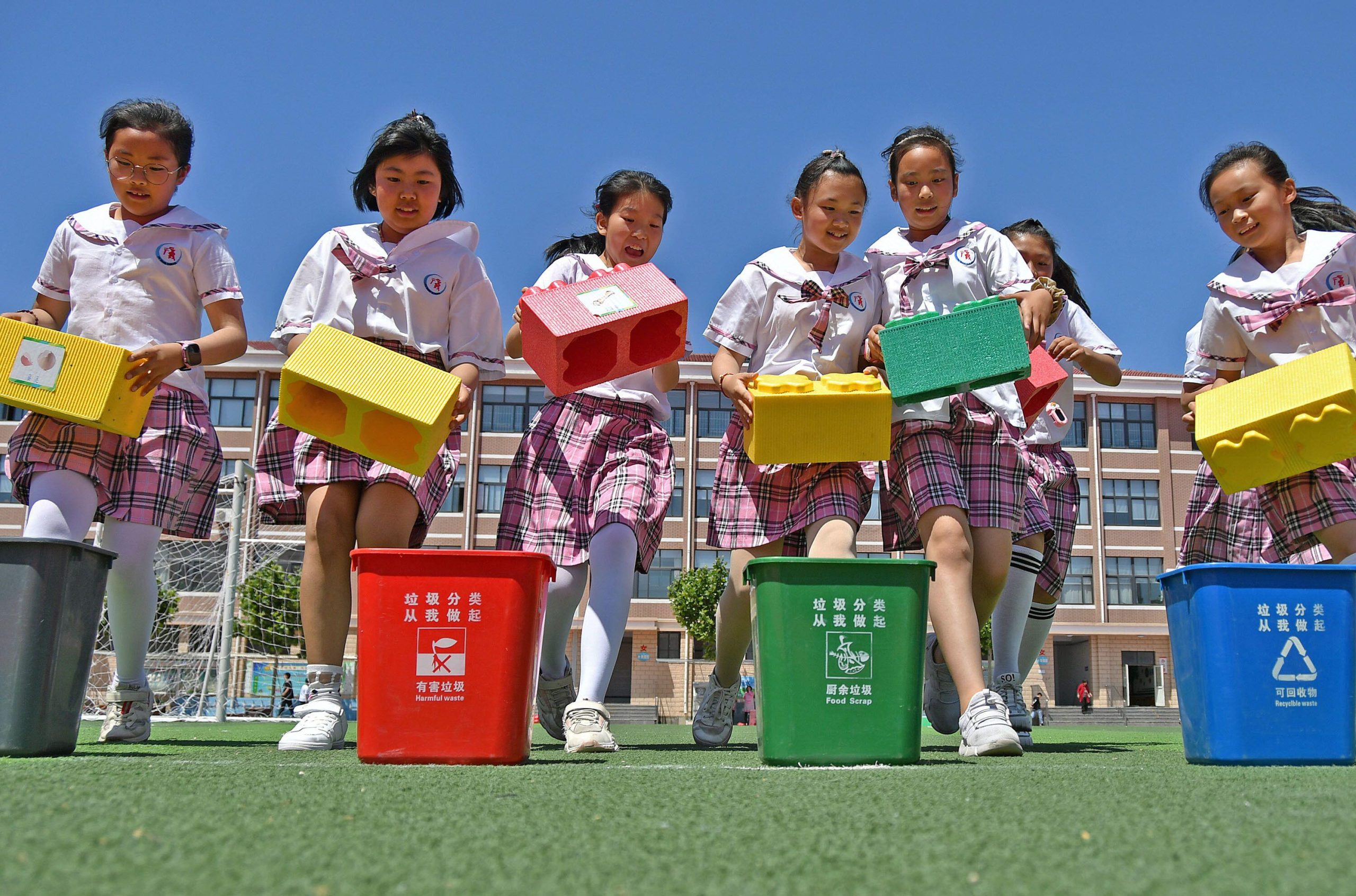
Luo Haiyan teaches geography at Guangzhou Middle School in southern China. She began exploring how to push for climate change education at her school more than a decade ago, after completing related teacher training with the China Association for NGO Cooperation (CANGO).
Luo began by introducing more climate change case studies and scenarios into her geography lessons. She then persuaded the school to incorporate climate change content into other subjects and to make it the focus of a weekly extracurricular class. Her pupils also participated in a survey of plant flowering in Guangzhou, which allowed them to observe and experience the relationship between plants and the climate.
“To get through to the pupils, it is important to have continuing interdisciplinary activities,” Luo says. “Those who take part in nature-observation activities in the context of climate change gain a much fuller understanding of the topic.”
“They are also more motivated to act than the children who only learn about climate change in the classroom.”
Support far from sufficient
Teachers in China face many challenges to employing an interdisciplinary approach to climate change education.
Climate change is taught at the 853 Farm Middle School in Baoqing county, in China’s northernmost province of Heilongjiang. Sun Qingyi, a maths teacher here, leads a weekly climate change class. Sun teaches the pupils about the causes and consequences of climate change, takes them out into nature and shows related films and documentaries in class.
The school is close to forests, mountains and wetlands, and it has a botanical garden with a small weather station. “The environment is not just about having fresh air but also about improving our mood. We favour getting the pupils out into nature,” Sun says.
However, lacking dependable financial support means the school sometimes “can’t even afford a bus for an outing”. Elsewhere, the weather station project had to be put on hold because Sun ran out of time and energy to keep it going.
Sun’s is not an isolated case. While climate change has found its way into the education system, it has no independent status within the primary- and secondary-level curricula. This makes it hard to cobble together budgets for the staff, materials, classroom time and funding needed to teach climate change meaningfully.
Frontline teachers know all about education, but there is a lack of basic knowledge when it comes to climate change and low-carbon developmentChen Ying, Chinese Academy of Social Sciences’ Research Institute for Eco-Civilisation scholar
In a speech at the World Education Frontier Forum in Shanghai last year, the president of the Shanghai Education Association, Yin Houqing, said he had conducted a survey of 236 schools in the city. According to his findings, only 2.5% out of more than 400 science projects were related to climate change.
Dialogue Earth consulted a Chinese school textbook editor: “Pupils have enough to learn as it is. Climate change is not a mainstream subject like physics, chemistry, history or geography. And it is difficult to stuff too much extra content into them. If it’s not in the standards, then it’s not in the textbooks.”
Wang Xiangyi, secretary-general of CANGO, shares a similar view: “Schools have so many classes to teach now. Making room for climate change too is quite challenging.”
As early as 2012, CANGO published a guide, the “Climate Change Education Reader”, and provided training for more than 1,000 teachers under its related education programme.
Still, equipping teachers with sufficient knowledge and teaching resources remains a big challenge.
Chen Ying, a scholar at the Chinese Academy of Social Sciences’ Research Institute for Eco-Civilisation, has authored popular-science books on climate change for different age groups and organised popular-science events.
Chen cares deeply about the issue: “Climate education starts with the teacher. Plenty of schools are now developing teaching materials, but climate change touches on a wide range of subjects and can be highly technical. Information from online searches is of varying quality.
“Material that may look convincing is often wrong, and there is a lot of circulating of false content. Frontline teachers know all about education, but there is a lack of basic knowledge when it comes to climate change and low-carbon development.”
At present, however, climate change education relies largely on teachers of other subjects. The likes of Sun Qingyi, a maths teacher who began teaching climate change out of personal interest and a sense of responsibility, are still the minority.
“It won’t be possible for every school to have a designated climate change teacher. But there should be an organisational effort to get professional training for teachers, especially principals,” says Chen Ying. “Also, climate change education is not just for schools – it should be for all of society. Everyone at different ages and stages needs to learn about this.”
